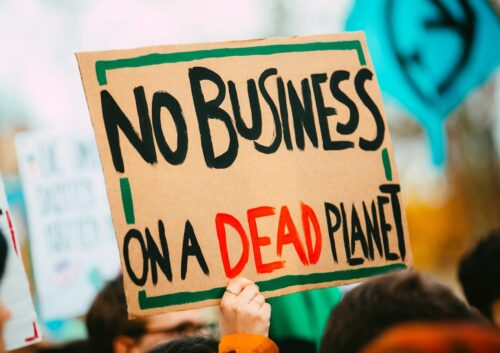ExxonMobil produced a report on Monday that anticipated oil demand reaching a “plateau” in 2030 and remaining fairly stable for the next 20 years — a prediction far out of line with political narratives of a “transition to green energy.” [emphasis, links added]
ExxonMobil’s “plateau” of oil demand was calculated at 102.2 million barrels per day, which is roughly what global demand worked out to last year.
The report predicted this equilibrium would be maintained by the developing world dramatically increasing oil consumption while the U.S. and Europe scale back their demand.
The overall vision of the report was a much slower, limited, and realistic “transition” than environmentalist politicians have demanded.
If the report’s projections are correct, the world will still be getting more than half of its energy from fossil fuels by 2050, but emissions will decline by 25 percent thanks to cleaner and more efficient methods of burning those fuels.
“Renewables will play an important role. So will oil and natural gas,” ExxonMobil predicted.
Coal also reportedly has a key role to play despite being one of the fuels most despised by the climate change movement.
The report envisioned oil and gas providing 54 percent of global energy by 2050, followed by “renewables” (wind, solar, and hydropower) at 15 percent, then coal at 13 percent.
The top five energy sources were rounded out with bioenergy at ten percent and nuclear power at six percent.
Bioenergy is, for the most part, plant matter converted into liquid fuel – ethanol and methane derived from the manure of herbivorous animals, for example.
One reason for the growing interest in bioenergy is that it can be combined with coal burning to maintain the energy output of coal with lower emissions. This is also one reason environmentalists are turning sour on bioenergy, combined with their belief that it releases too much carbon into the atmosphere, driving climate change.
Coal plus bioenergy hitting 23 percent of global power generation in 2050, while oil and gas continue to account for more than half, is not the “energy transition” climate activists had in mind.
ExxonMobil’s prediction for oil demand was notably higher than that of rival BP, which projected demand of just 75 million barrels per day (versus ExxonMobil’s 102 million) in a similar report produced this year.
Both of those projections are far higher than the International Energy Agency’s (IEA) vision of 55 million BPD consumption in a truly climate-sensitive 2050.
However, even ExxonMobil’s bullish forecast is lower than that of the Organization of the Petroleum Exporting Countries (OPEC), which said oil demand will reach 116 million BPD by 2045.
ExxonMobil analysts were quite insistent that BP got it wrong, and the IEA was simply daydreaming.
The Texas oil company warned politicians and investors that making plans based on less than 102 million BPD consumption – or using raw political power to try to force demand below that level – would result in a global oil shock, potentially increasing the price of crude oil by 400 percent or more.
Read rest at Breitbart




















Ontario Hydro tried adding biomass (baled corn stalks) at the coal-fired Nanticoke Generating Station. Epic fail. Maybe they weren’t committed to success. A facility worth billions was dynamited, scrapped and levelled for
a solar farm. I’ll listen to ExxonMobil with confidence, because they are responsible to shareholders.
I agree Sonnyhill. ExxonMobil are realists. They are focused on what is and and what can be achieved. They are highly rational in what they say and do. I trust them well long before any government or activist.
They also actually answer to their shareholders who expect the company to do all it can to maximize their profits to increase the value of the company. Something all public companies have the fiduciary requirement to do. And exploiting the resources they own is exactly that.